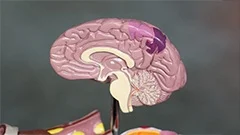Introduction
The digestive system is an essential organ system in animals, responsible for the ingestion, breakdown, absorption, and elimination of food substances. This course aims to provide a comprehensive understanding of the origin, structure, and evolution of this vital system. We will explore its importance, basic functions, key components, and the intricate mechanisms involved in digestion across various taxa, highlighting the diversity, complexity, and adaptability that define animal physiology.
Origin of the Digestive System
The origins of the digestive system can be traced back to the earliest life forms on Earth. The first organisms were simple, single-celled creatures that absorbed nutrients directly from their surroundings. As life evolved and became more complex, animals emerged with specialized organs dedicated to ingesting, processing, and utilizing food.
The digestive system is thought to have evolved from the phagocytic ability of cells. Phagocytes are immune cells that engulf foreign particles such as bacteria or dead cells. Over time, these cells developed into specialized structures like the mouth, esophagus, stomach, intestines, and anus, forming a complete digestive tract in animals.
Structure of the Digestive System
The basic structure of the digestive system consists of a continuous tube-like organ known as the gastrointestinal (GI) tract. This tract extends from the mouth to the anus and can be further divided into several parts:
- Mouth (oral cavity): The point of ingestion where food is broken down by teeth and mixed with saliva for easier swallowing.
- Esophagus: A muscular tube that connects the mouth to the stomach, transporting food through peristalsis (wave-like muscle contractions).
- Stomach: A sac-like organ where food is further broken down by gastric juices and mixed with enzymes for digestion.
- Small intestine: The longest part of the GI tract, where most absorption of nutrients occurs due to its large surface area and villi (finger-like projections).
- Large intestine: A shorter segment that absorbs water, electrolytes, and some vitamins before waste is expelled from the body through the anus.
- Accessory organs: Organs that aid in digestion but are not part of the GI tract, such as the liver, pancreas, and gallbladder.
Evolution of the Digestive System
The structure and function of the digestive system have evolved significantly throughout history. Animals have developed various strategies to adapt to their specific ecological niches, dietary habits, and body sizes. For example:
- Vertebrates: Developed a tube-like GI tract for efficient food processing, with specialized segments like the stomach and intestines.
- Invertebrates: Display a wide range of digestive systems, from simple sac-like structures to complex, branched tubes. Some invertebrates, such as earthworms and slugs, have a unique digestive system where the digestive tract is interrupted by a muscular diverticulum (the cecum) where food is stored and partially digested before continuing through the rest of the GI tract.
- Aquatic animals: Have adapted to an aquatic environment by developing specialized organs like the liver for detoxifying harmful substances, as well as a more efficient circulation system for delivering nutrients throughout the body.
- Terrestrial herbivores: Have developed large, complex stomachs with multiple chambers (ruminants) or a muscular gizzard (birds) to break down tough plant material.
- Carnivores and omnivores: Have shorter digestive tracts and powerful teeth for tearing and grinding meat. They also secrete strong stomach acid to kill bacteria and break down proteins more efficiently.
In conclusion, the digestive system is a remarkable organ system that has undergone significant evolution throughout the history of life on Earth. Understanding its structure, function, and adaptations provides valuable insights into animal physiology and the diversity of life on our planet.
MCQ: Test your knowledge!
Do you think you know everything about this course? Don't fall into the traps, train with MCQs! eBiologie has hundreds of questions to help you master this subject.
These courses might interest you
Create a free account to receive courses, MCQs, and advice to succeed in your studies!
eBiologie offers several eBooks containing MCQ series (5 booklets available free for each subscriber).




